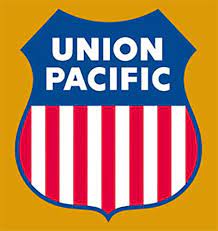![]()

The Union Pacific announced plans Sunday to replace its CEO later this year after a hedge fund that holds a $1.6 billion stake in the railroad went public with its concerns about his leadership.
The managing partner of Soroban Capital Partners, Eric Mandelblatt, said in a letter that the Omaha, Nebraska-based railroad has lagged behind its peers during Lance Fritz’ tenure over the past eight years and that a leadership change is overdue.
It was also revealed the hedge fund has been privately pressuring Union Pacific to oust Fritz at least since last year.
“UNP (Union Pacific) has repeatedly and significantly failed to reach its potential under Mr. Fritz’s leadership,” Mandelblatt wrote. “UNP has ranked the worst in safety, volume growth, revenue growth, cost management, EBIT growth, and total shareholder return. These are highly underwhelming results despite UNP having the premier railroad franchise in North America.”
Mandelblatt urged the railroad to hire former Chief Operations Officer Jim Vena, who helped overhaul Union Pacific’s operations several years ago. But the railroad’s board said in a statement that it has been working with a leadership consultant since last year to identify the best internal and external candidates for the job.
Vena was brought in to Union Pacific in 2019 from Canadian National to help the railroad change to a new operating model that relies on fewer, longer trains and significantly fewer employees and locomotives to move freight, but Vena left after less than two years on the job.
Nearly all the major U.S. freight railroads have adopted that model since CSX first began using it in 2017 after it was pressured by a different hedge fund to make changes although rail unions have expressed concerns that this “precision scheduled railroading” model has made the industry riskier because workers are spread so thin after nearly one-third of all rail jobs have been eliminated over the past six years.
The unions say these practices make incidents like Norfolk Southern’s fiery derailment in Ohio earlier this month more likely, but the railroads have defended their safety record.
UP’s lead independent board member Michael McCarthy praised Fritz in a statement Sunday for helping grow the railroad’s profits through the uncertain times of the pandemic — and through the challenges of last year’s bitter contract negotiations with its 12 unions.
“He has capably led our company during a time of significant challenge and change, positioning Union Pacific to deliver long-term sustainable value for shareholders and customers,” McCarthy said. “We are immensely grateful to have Lance’s continuing leadership and support and know he will ensure a smooth transition.”
The railroad did post a $1.6 billion profit in the fourth quarter, but over the past year it has struggled at times to handle all the shipments companies asked it to deliver. Twice regulators ordered Union Pacific to deliver emergency shipments to livestock producer Foster Farms to ensure that company wouldn’t run out of feed for the millions of chickens it raises.
The U.S. Surface Transportation Board also held a special hearing in December to examine the way Union Pacific puts short-term limits on shipments to try and clear up congestion on its rail network because the railroad has been using that tactic much more than other major freight railroads.
Union Pacific has been steadily improving its performance since last spring as it hired hundreds of additional employees to operate its trains.
Fritz said in a statement that he has been honored to lead the railroad he’s worked at for the past 22 years. He praised Union Pacific’s employees and touted the railroad’s performance without directly addressing the hedge fund’s criticism.
“Union Pacific has embarked on a transformative journey that will result in stronger, more consistent service for our customers, with enhanced earnings growth and value creation for our shareholders,” Fritz said.
Union Pacific is one of the nation’s largest railroads with a network of 32,400 miles (52,000 kilometers) of track in 23 Western states.
